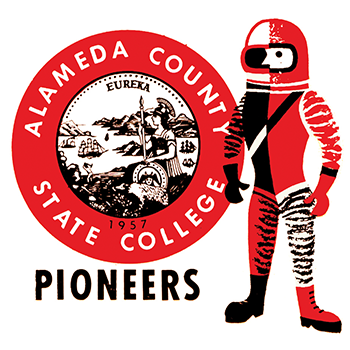What Does It Mean To Be A Pioneer?
March 8, 2023
California State University, East Bay is one of the most diverse college campuses in the United States, housing students of every religion, race, and identity. As a result, defining the CSUEB identity into a single image or phrase is particularly challenging. This lack of unified identity is made especially stark by the lack of a school mascot since the retirement of ‘Pioneer Pete.’
Given the diverse pool of students, consensus on a common identity is mixed and difficult to achieve. East Bay, for the most part, lacks any large-scale, school-wide events, exacerbating the monumental challenge of building community on a commuter campus.
Tia Thompson, a fourth-year student, comments on the issue saying, “As someone who lives on campus, I understand that many (commuting) students want to go home after classes. I think having fun events like a homecoming would entice people to stay on campus.”
Thompson’s words ring true for third-year Maria Arechiga: “I think we do lack a unified identity, it’s almost shocking to meet people who go to the same school when I’m out of class,” added the student.
East Bay is one of the few colleges in the CSU system that doesn’t have a mascot. Pioneer Pete — the previous face of CSUEB circa the 1980s— was removed as a mascot due to his connotations of colonization. Before Pioneer Pete, the former “Alameda County State College” that is now CSUEB was represented by an astronaut, influenced by the Space Race in the 1960s. Since the termination of Pete in 2018, the university has not replaced the disgraced mascot, leaving students without a definitive identity to coalesce around.
In the quest for a new mascot, the main dilemma lies in finding an image that encompasses the many demographics of our school. With the school’s diverse profile, do we even need a mascot?
Retreading the idea of nurturing campus identity, Thompson stated, “I feel like if we had a mascot or more events on campus, I think students would feel more pride in their school.”
While skeptical of the necessity of having a mascot, Arechiga has offered support for a possible adoption of a mascot as a binding agent: “I don’t think we need a mascot, but I think having some symbol to unify the campus would be cool,” offered Arechiga. While mascots don’t make or break school pride, having a common symbol or character for students to identify with would make them much more willing to connect with their school, allowing for a more engaged and spirited student community.
Though East Bay’s focus may be away from promoting the stereotypical “college experience,” assigning a rigid identity to an otherwise varied pool of students with unique backgrounds and individual ambitions may prove not only futile but unnecessary.
Casting aside the differences among the crowd, the average Pioneer is defined by their integrity and groundedness. Kimberly Hawkins, manager of news and media at East Bay, outlined her perception of the typical student at East Bay, citing that “more than 60 percent of Cal State East Bay students are the first in their families to attend college and many are transfer students from local community colleges. Our students are hardworking, dedicated individuals, many of whom have families and are working while getting their degrees. They are Pioneers in their fields and their communities,” commented Hawkins.
Unlike colleges with strong school spirit that cultivate distinct, institutional identities apart from the students’ livelihood, East Bay’s non-solution emphasizes individual achievement and holistic representation of students as people with initiative. “Students at East Bay are very realistic and don’t mind their ‘normal lives,’” Arechiga claimed, continuing with praise, “ It’s perfect for first-generation students because of the affordability and facilities, which I think contributes to such a diverse student population that doesn’t fall under a certain demographic as you would see at certain UCs.” Rather than imposing an identity, the students are provided with considerable opportunity to self-determine their own identity.

















